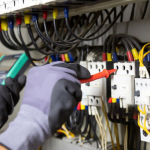Buying a private boat is an excellent decision, offering the freedom to sail the open waters at your leisure. However, the process involves careful consideration to ensure a smooth transaction and many happy trips ahead. Today, we provide a comprehensive guide to assist you through the process of private boat sales.
1. Define Your Needs and Budget
Your boating needs are as unique as you are. They set the course for your entire purchase. For example, if you’re angling for a good catch, consider a sturdy fishing boat with features like live wells, rod holders, and deck space for casting.
For those who dream of tranquil days on the lake, a pontoon or a deck boat offers comfort and space for family and friends. Also, if you’re drawn to the call of the open sea, a sailing yacht or a robust ocean cruiser might be your vessel of choice.
Once you’ve pinpointed your boating dreams, it’s time to anchor them in reality with a realistic budget. Your budget should encompass more than the sticker price of the boat. Consider the full spectrum of ownership costs to avoid any unexpected financial waves down the line. These costs include:
- Purchase price. Whether new or used, your boat’s price will vary based on size, brand, age, and features.
- Ongoing maintenance. Boats require regular upkeep. From engine maintenance to hull cleaning, these costs can add up quickly.
- Docking fees. Depending on where you plan to store your boat, docking fees can significantly impact your budget.
- Insurance. Just like a car, your boat needs insurance. Rates can vary based on the boat’s value, type, and even how you plan to use it.
- Operational costs. Fuel, boating gear, upgrades, all must also be factored into your annual budget.
By thoroughly defining your needs and meticulously planning your budget, you lay a solid foundation for your boating. This initial investment of time and thought paves the way for a smoother sail through the rest of your boat purchasing process. And researching details on your future boat will let you compose a bill of sale document more accurately for recording a legal transaction.
2. Research Boat Market Trends and Pricing
The boat market can be as unpredictable as the sea, with prices ebbing and flowing based on various factors. Here are some key elements to consider when researching market trends and pricing:
- Seasonal variations. You should note prices may get higher during the peak boating season when demand surges. Conversely, you might find better deals during the off-season when sellers are keen to move inventory.
- Market demand. The popularity of certain boat types or models can significantly influence pricing. Trends can shift, so having a pulse on what’s in demand and why is very beneficial. If this is a model known and loved for its durability, fuel efficiency, or innovative features, this of course will mean a higher price for it.
- Condition of the boat. The age, maintenance history and overall condition of a boat play a critical role in its valuation. A well-maintained used boat might cost almost like newer models, and boats in strong need for repairs might be priced lower, but more than likely, they will require additional costs in the future.
3. Initial Boat Inspection and Professional Survey
Once you have your eye on a potential vessel, then you have to proceed with an inspection. This step is critical to ensuring your dream boat is visually appealing, structurally sound and also safe. Look for any signs of damage — cracks, dents, patches on the hull, the list goes on. Check the deck and the interior for any signs of wear or previous repair work. A boat that has been neglected might have issues like rust, mold, or decay. These are often the indicators of more serious problems.
You should also assess the condition of sails, rigging and upholstery. Check the electronic systems, plumbing and engine, even if you’re not an expert. Your observations will be valuable during the professional survey.
After your initial inspection, it’s wise to bring in a professional. The marine surveyor conducts a thorough examination, often both in and out of the water, to assess the boat’s structural integrity, system functions, and overall performance. The surveyor can pinpoint areas needing immediate attention or maintenance soon. This insight is invaluable for negotiating the sale price, so it’s worth to invest time and resources in a comprehensive inspection. It protects your investment and ensures the safety of your vessel.

4. Legal and Administrative Aspects
Managing the legal and administrative details is as essential as inspecting the boat’s physical condition. This stage ensures that your new boat has no unforeseen legal issues. Clear and legal ownership must be confirmed before finalizing the purchase. So, ask for documents that display the sequence of ownership and confirm the seller’s right to sell the boat. It includes titles, registration papers and previous bills of sale.
Investigate any existing debts or claims on the boat that might become your responsibility post-purchase. It can typically be checked through a title search or marine documentation center.
After confirming the boat’s condition and ownership, it’s crucial to formalize the transaction. Handle the contractual part as follows:
- Written agreement. Prepare a purchase contract that precisely states the terms of the sale, including price, method of payment, and any conditions, such as passing a professional inspection or obtaining financing.
- Bill of sale. This document acts as proof of the transaction. It should detail the boat’s specifications, identification number, the names and addresses of both the buyer and seller and the date of sale.
Ensure all parties involved sign the necessary document and keep copies for your records. Sometimes, you may also need to notarize the signatures to validate the agreement.
5. Finalize the Boat Purchase
Finalizing your boat purchase and addressing post-purchase procedures are crucial to a smooth ownership experience. This stage combines negotiation and payment methods with some post-purchase concerns.
So, armed with knowledge from your surveyor’s report and a thorough understanding of the boat’s condition, you can negotiate the price. Consider the cost of any necessary repairs or upgrades identified during the inspection and use these as leverage in your negotiations. A fair price reflects the true value and condition of the boat.
Once the price is agreed upon, the next step is the transaction. Choose a secure method of payment that offers protection for both parties. Standard methods include bank transfers or escrow services. Along with the payment, ensure the transfer of all crucial documents, including the title, registration, and applicable warranties. These documents are proof of ownership and essential for future transactions or claims.
Your attention should now be on insurance and upkeep after the purchase to ensure your boat is a valuable asset. Think about the following:
- Insurance. Choose a thorough insurance plan addressing any risks of owning a boat. In many situations, taking this action is not only required by law but also a prudent way to protect your investment.
- Upkeep and maintenance. Adhere to a regular maintenance schedule. Regular maintenance is essential to preserving the condition and value of your boat, whether it takes the form of routine cleaning, engine inspections, or system updates.
Carefully managing the final stages of the transaction and establishing strong after-sale procedures will protect your investment and ensure you have many happy memories with your new boat.
Lynn Martelli is an editor at Readability. She received her MFA in Creative Writing from Antioch University and has worked as an editor for over 10 years. Lynn has edited a wide variety of books, including fiction, non-fiction, memoirs, and more. In her free time, Lynn enjoys reading, writing, and spending time with her family and friends.















